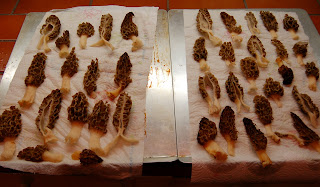

TO: Sam Venable
FROM: Vince Vawter
RE: Ember Days
Your continuous seasonal promotions of Ember Days inspired me to attempt to validate in a scientific manner your supposition that brush cut on those days will not grow back as rapidly and enthusiastically as brush cut on non-Ember Days.
Not that I suggest that you would ever exaggerate, customize or generally belie the truth in any manner.
On March 4, 2009, the first Ember Day of the year, I cut brush on the south side of my driveway. On March 5, a non-Ember Day, I cut the brush on the north side. The brush in question was mostly of the hated common privet variety.
Herewith, I enclose ground-level photographic evidence that Ember Days do appear to have some basis in reality and are not a figment of the heralded Venable imagination. As you can see, the privet in the second photo has not re-emerged. This is the side of my driveway cut on an Ember Day. The privet in the first photo is up and running. I cut this on a non-Ember Day.
Once again, your column gives solace to the lazy of our tribe who would rather spend the afternoon on the couch rather than wielding a sling blade in the hot sun.
Congratulations on yet another contribution to the nurturing of mankind, and if you’re not doing anything in the next few weeks would you mind helping me cut the brush on that north side of the drive.
























